Abstract
The spin-lattice relaxation time (T1) of water protons in mouse muscle was studied from 10(4) to 10(8) Hz at several temperatures, and the deuteron T1 of muscle water was studied from 2.0 X 10(3) to 1.54 X 10(7) Hz at several temperatures. Proton T1's of muscle and brain water with different D2O contents were measured at 25 degrees C and 35 MHz. From the results of variable frequency and temperature measurements and the data of isotope substitution, it is concluded that the major relaxation mechanism for the protons in muscle water is the intermolecular dipolar interaction between the protons of the macromolecules and the protons of the water molecules in the hydration layer. It is also suggested that the relaxation of deuterons can be accounted for a very small fraction of water molecules directly hydrogen-bonded to the macromolecules.
Full text
PDF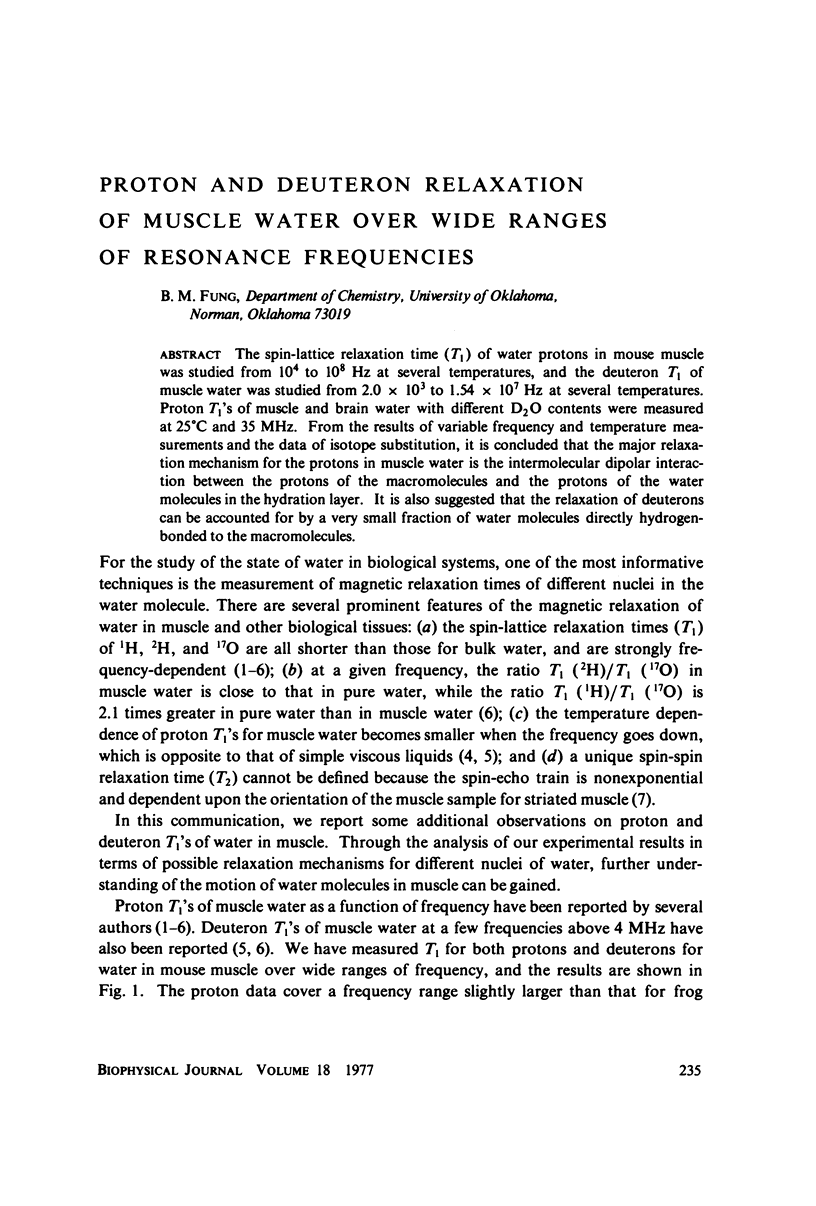
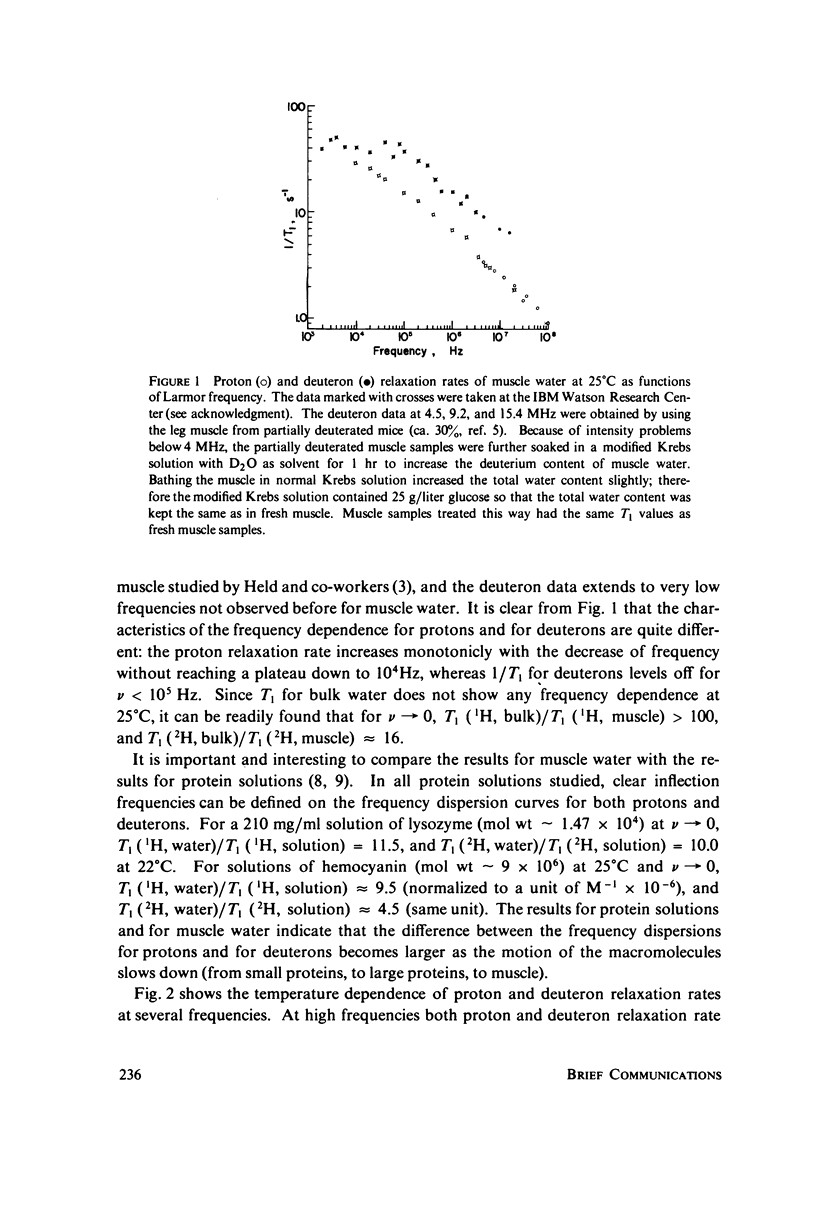
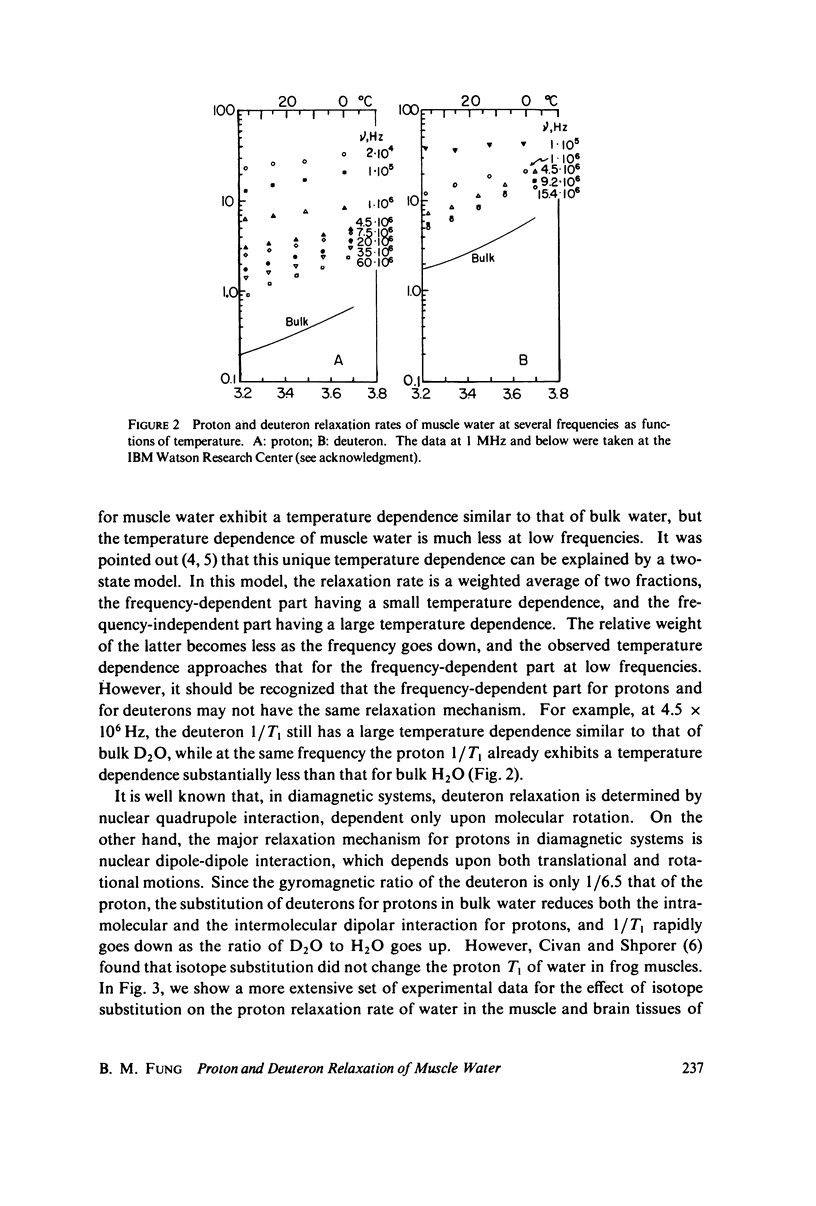
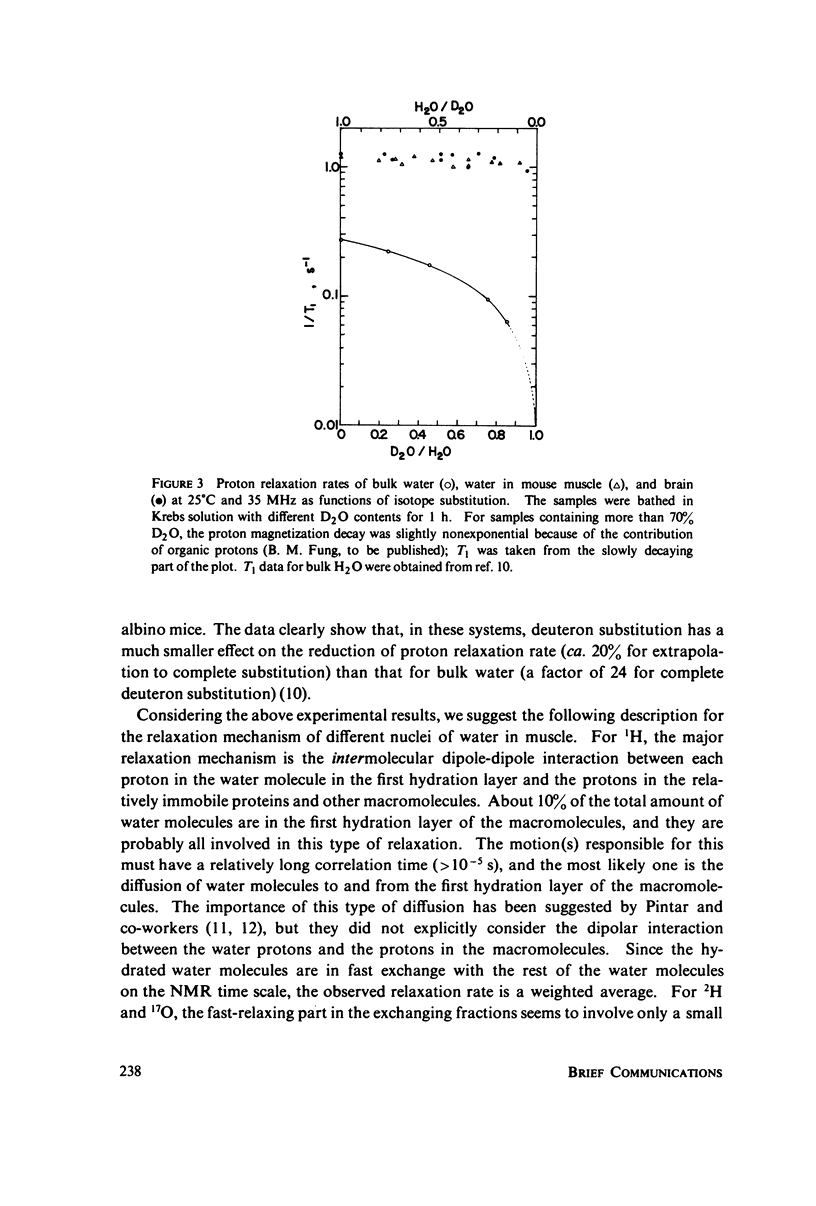
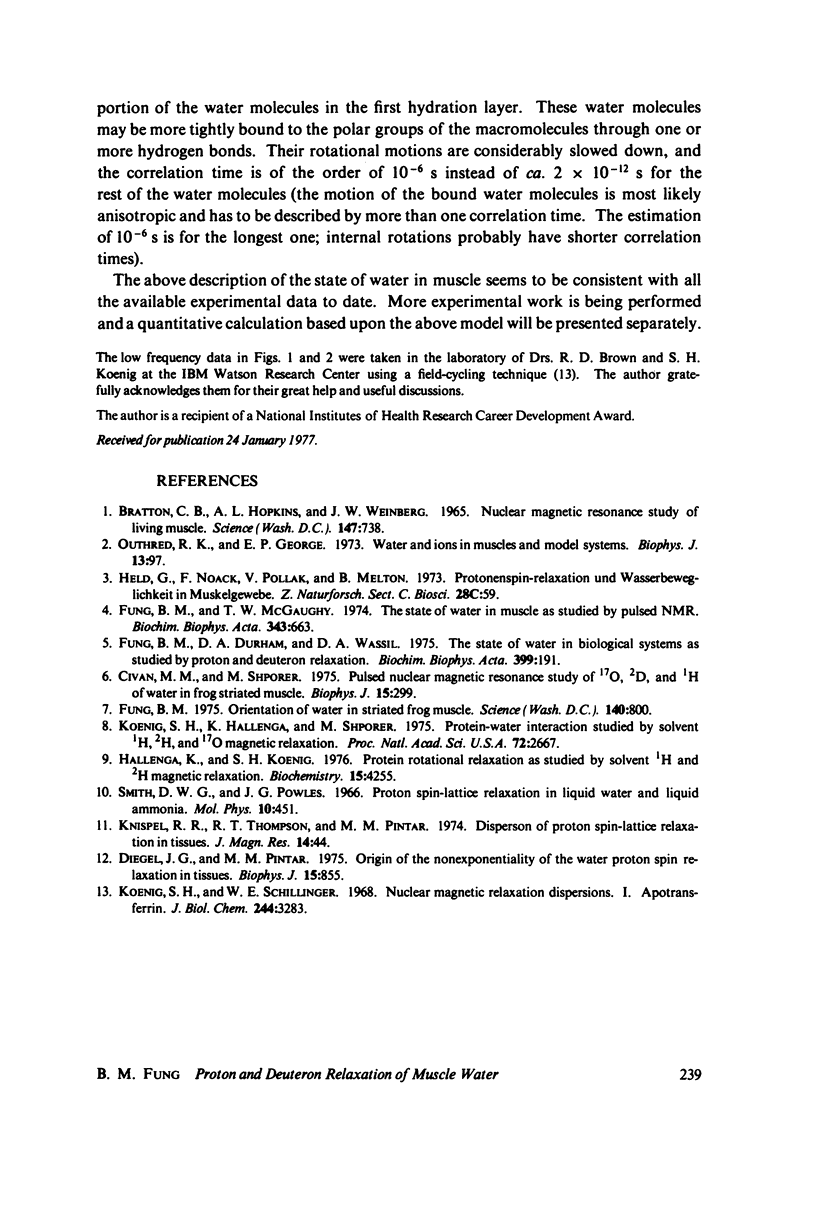
Selected References
These references are in PubMed. This may not be the complete list of references from this article.
- BRATTON C. B., HOPKINS A. L., WEINBERG J. W. NUCLEAR MAGNETIC RESONANCE STUDIES OF LIVING MUSCLE. Science. 1965 Feb 12;147(3659):738–739. doi: 10.1126/science.147.3659.738. [DOI] [PubMed] [Google Scholar]
- Civan M. M., Shporer M. Pulsed nuclear magnetic resonance study of 17-O, 2-D, and 1-H of water in frog striated muscle. Biophys J. 1975 Apr;15(4):299–306. doi: 10.1016/S0006-3495(75)85820-6. [DOI] [PMC free article] [PubMed] [Google Scholar]
- Diegel J. G., Pintar M. M. Origin of the nonexponentiality of the water proton spin relaxations in tissues. Biophys J. 1975 Sep;15(9):855–860. doi: 10.1016/S0006-3495(75)85861-9. [DOI] [PMC free article] [PubMed] [Google Scholar]
- Fung B. M., Durham D. L., Wassil D. A. The state of water in biological systems as studied by proton and deuterium relaxation. Biochim Biophys Acta. 1975 Jul 14;399(1):191–202. doi: 10.1016/0304-4165(75)90225-1. [DOI] [PubMed] [Google Scholar]
- Fung B. M., McGaughy T. W. The state of water in muscle as studied by pulsed NMR. Biochim Biophys Acta. 1974 May 24;343(3):663–673. doi: 10.1016/0304-4165(74)90287-6. [DOI] [PubMed] [Google Scholar]
- Fung B. M. Orientation of water in striated frog muscle. Science. 1975 Nov 21;190(4216):800–802. doi: 10.1126/science.1198098. [DOI] [PubMed] [Google Scholar]
- Hallenga K., Koenig S. H. Protein rotational relaxation as studied by solvent 1H and 2H magnetic relaxation. Biochemistry. 1976 Sep 21;15(19):4255–4264. doi: 10.1021/bi00664a019. [DOI] [PubMed] [Google Scholar]
- Held G., Noack F., Pollak V., Melton B. Protonenspinrelaxation und Wasserbeweglichkeit in Muskelgewebe. Z Naturforsch C. 1973 Jan-Feb;28(1):59–62. [PubMed] [Google Scholar]
- Koenig S. H., Hallenga K., Shporer M. Protein-water interaction studied by solvent 1H, 2H, and 17O magnetic relaxation. Proc Natl Acad Sci U S A. 1975 Jul;72(7):2667–2671. doi: 10.1073/pnas.72.7.2667. [DOI] [PMC free article] [PubMed] [Google Scholar]
- Koenig S. H., Schillinger W. E. Nuclear magnetic relaxation dispersion in protein solutions. I. Apotransferrin. J Biol Chem. 1969 Jun 25;244(12):3283–3289. [PubMed] [Google Scholar]
- Outhred R. K., George E. P. Water and ions in muscles and model systems. Biopolymers. 1973 Feb;13(2):97–103. [PubMed] [Google Scholar]


